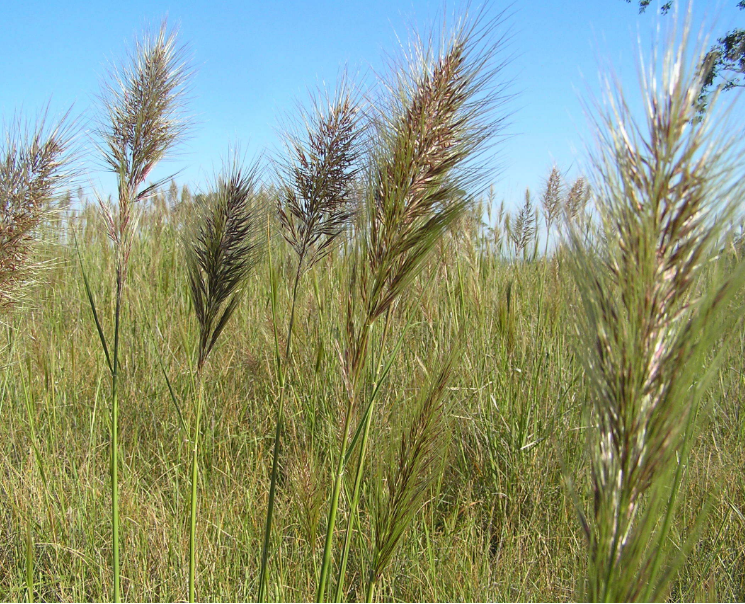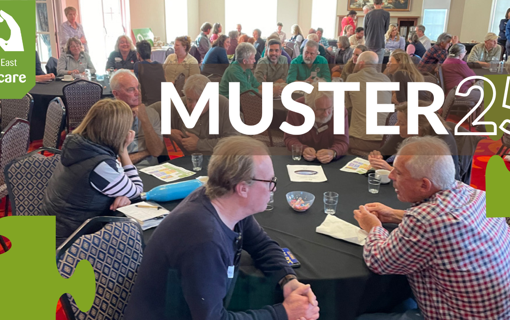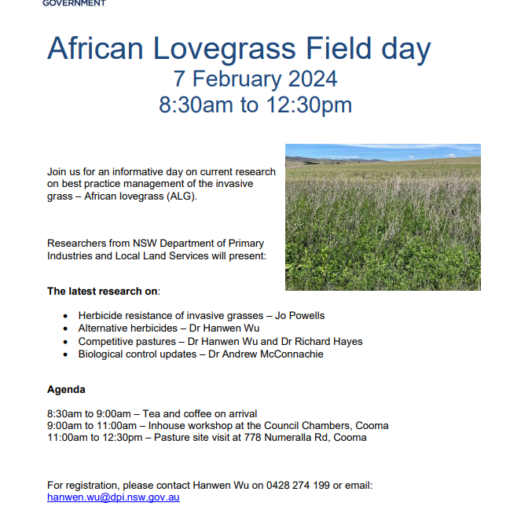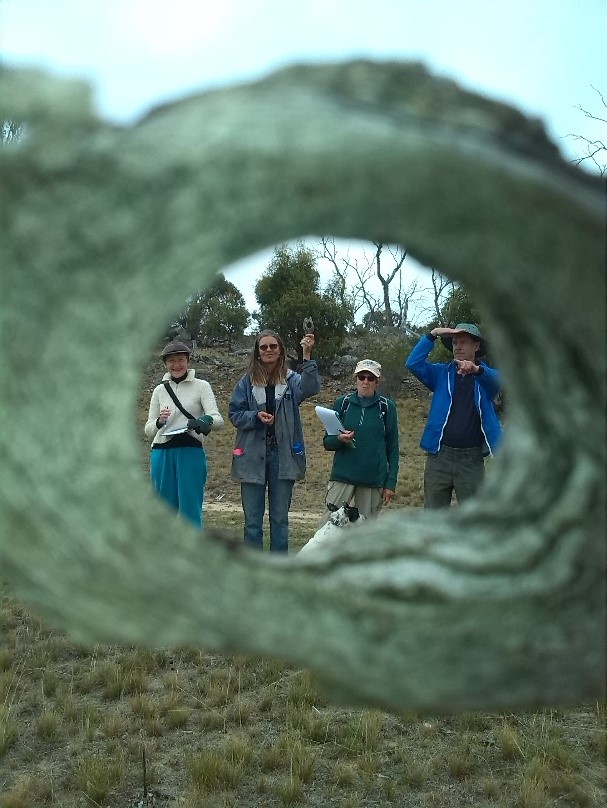
Last Saturday, a group of six Landcarers, aged 6 to 70, took themselves off to Gegedzerick Travelling Stock Reserve, the area surrounding the historic church atop the hill just north of Berridale. They had one question on their minds: how many of the dead ribbon gums lost to dieback contain hollows? Why did they want to know? Because hollows provide nests and shelter for birds, bats, marsupials, reptiles and frogs. This includes a third of the animal species found on the Monaro that are listed as vulnerable or endangered (Table).
Vulnerable and endangered Monaro species that use hollow-bearing and/or dead trees as lifecycle habitat. (Data sourced from here and here).
| Common Name | NSW Status |
| Birds | |
| Eastern False Pipistrelle | Vulnerable |
| Gang-gang Cockatoo | Vulnerable |
| Glossy Black-Cockatoo | Vulnerable |
| Brown Treecreeper (eastern subspecies) | Vulnerable |
| Turquoise Parrot | Vulnerable |
| Barking Owl | Vulnerable |
| Powerful Owl | Vulnerable |
| Masked Owl | Vulnerable |
| White-bellied sea eagle | Vulnerable |
| Swift Parrot | Endangered |
| Marsupials | |
| Eastern Pygmy-possum | Vulnerable |
| Spotted-tailed Quoll | Vulnerable |
| Yellow-bellied Glider | Vulnerable |
| Squirrel Glider | Vulnerable |
| Bats | |
| Eastern Bentwing-bat | Vulnerable |
| Southern Myotis | Vulnerable |
| Eastern False Pipistrelle | Vulnerable |
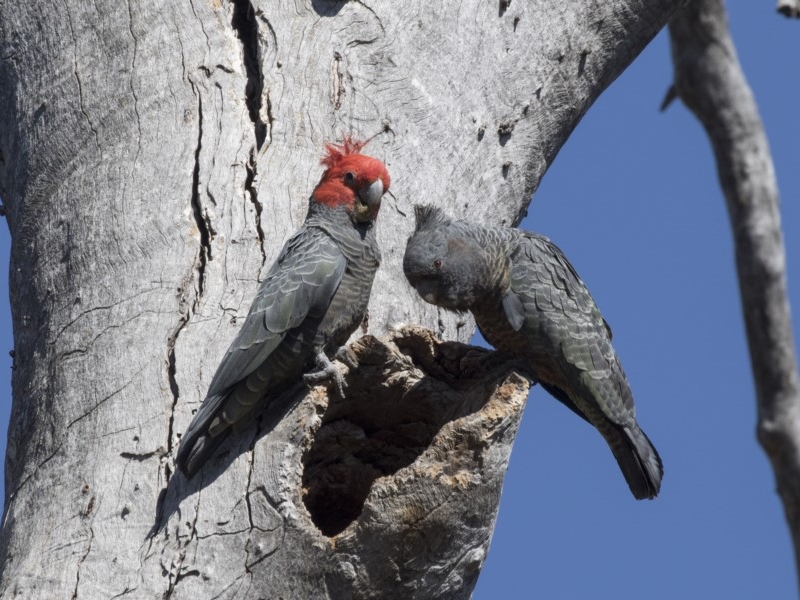
One hundred and eleven trees counted and a quick analysis revealed that a remarkable 59% of mature dead trees housed a hollow, and half of these had two or more hollows. This is consistent with results from much larger studies in forests of south-east Australia (see here and here).
We tested for systematic effects of observer bias, tree height and whether the tree was completely dead or still had live limbs. There were none.
Only old trees have hollows and they take around 100 years to form. So now, more than ever, we need to let the dead dieback trees stand. Cutting them down for firewood or tidiness’ sake will destroy vital habitat for many birds and animals, both endangered and common.. That is why removing dead mature trees is listed as a key threatening process under the Biodiversity Conservation Act 2016 Act.
More than that, as the dead trees decay and drop branches, they create a nursery for the next generation of young trees to germinate and establish, and harbour the microbes that keep the soil functioning so that more trees and grasses can grow. Thus these standing dead have yet to complete their final service to the land.
For more information on the importance of preserving hollow-bearing trees, see here and here.

